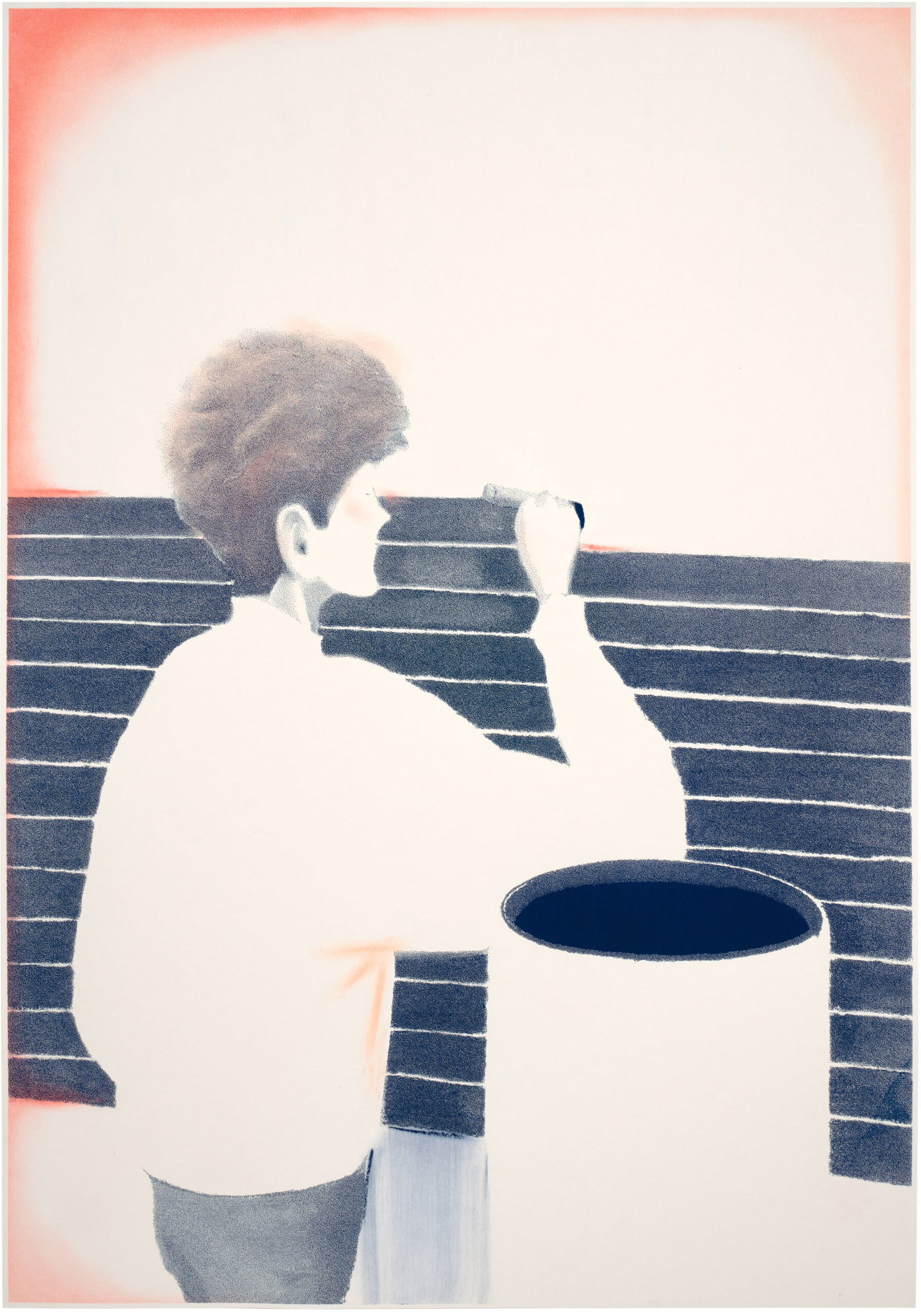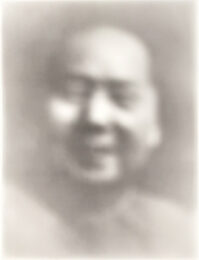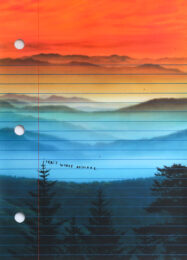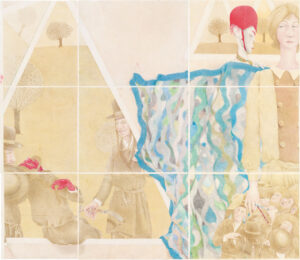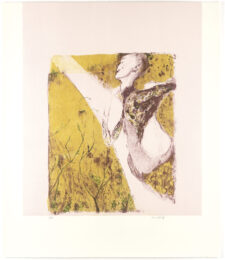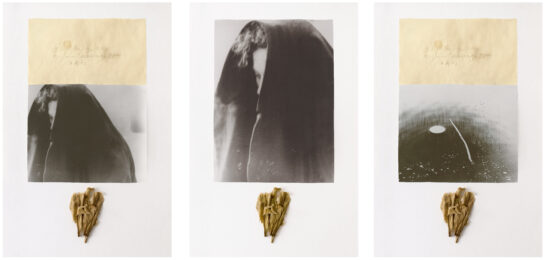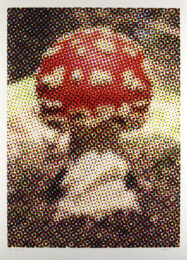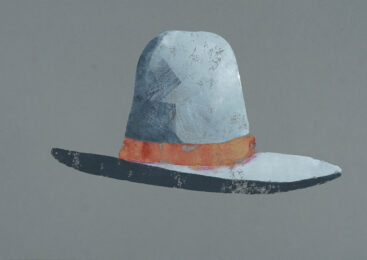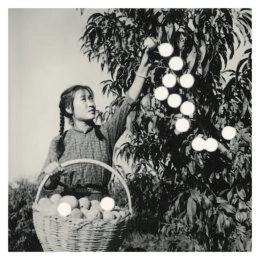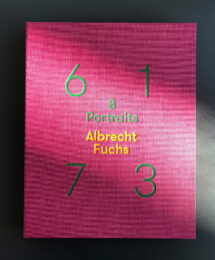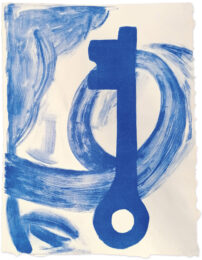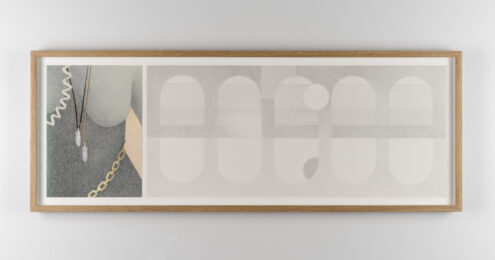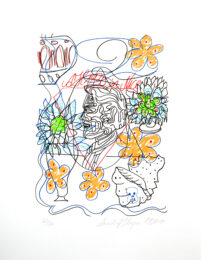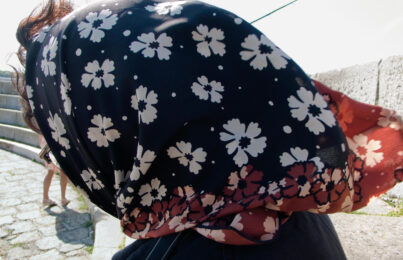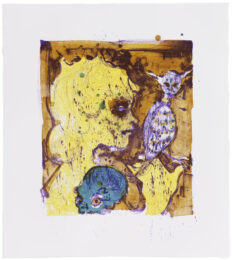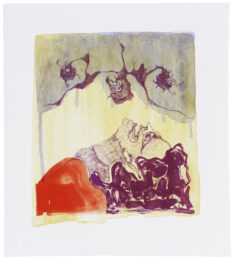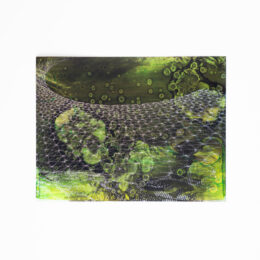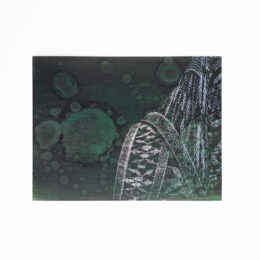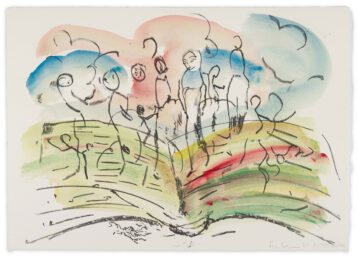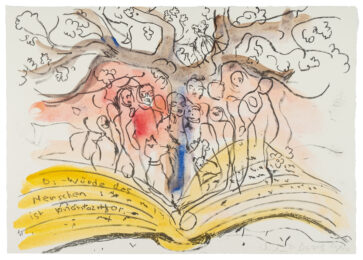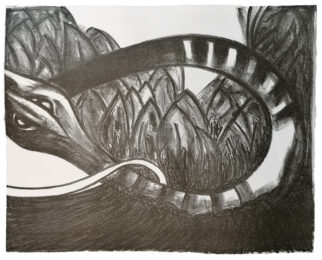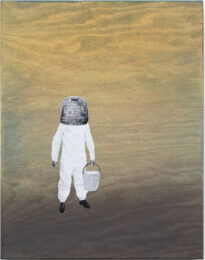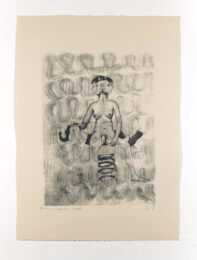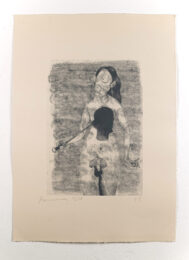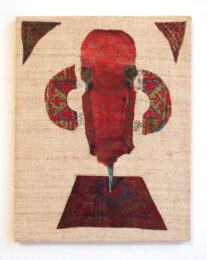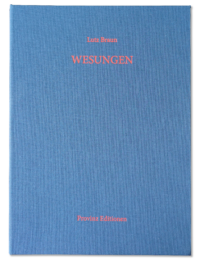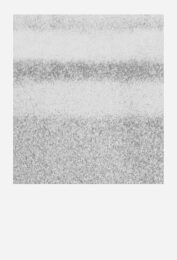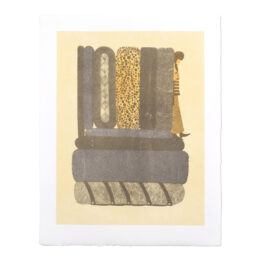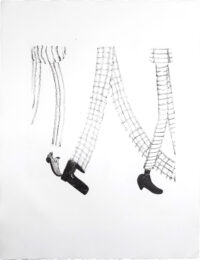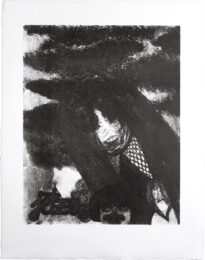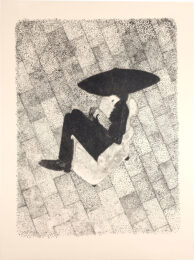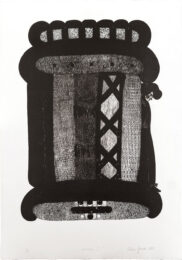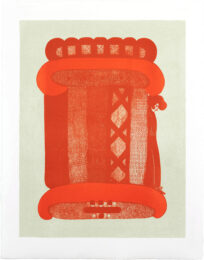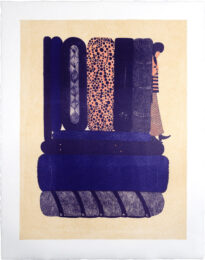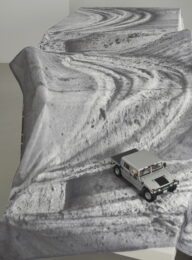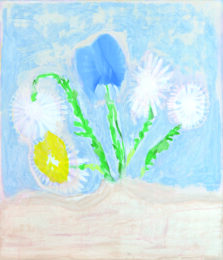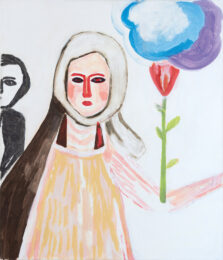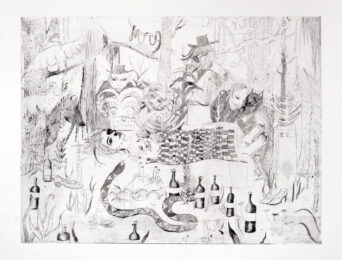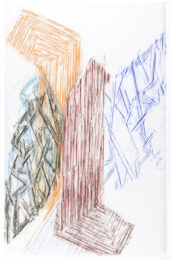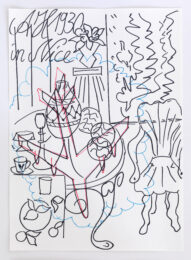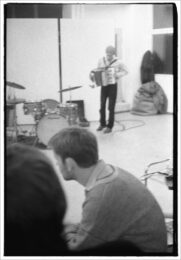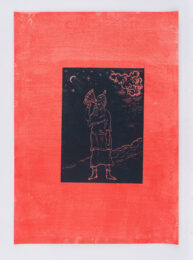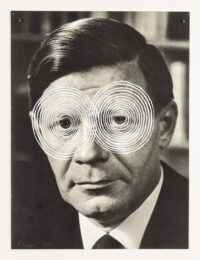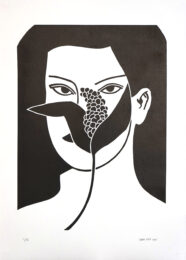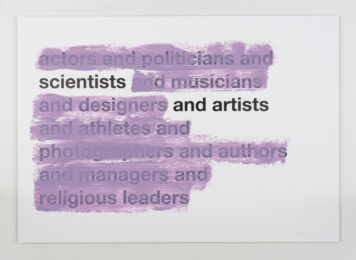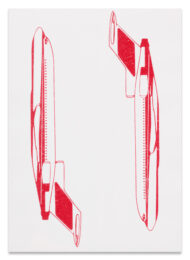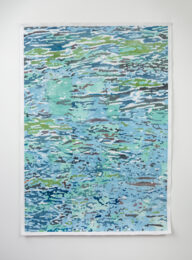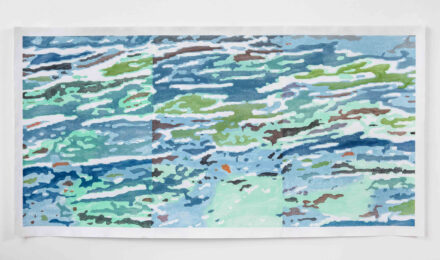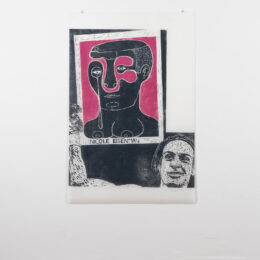Details — Click to read
Manuel Kirsch
never again (Sturtevant paints Stella), 2022
Screen print and pastel chalk on paper
Edition: 10 (3 AP)
78.8 x 54.9 cm
Manuel Kirsch (*1986 in Freiburg im Breisgau) selected a photograph of Elaine Sturtevant (1924-2014) at work as the basis for a series of drawings, and as a contribution to our new edition. The hand-coloured silk-screen print shows the exceptional and noted appropriation artist* as she copies one of the works in Frank Stella’s Black Paintings series. Sturtevant is focussed, covering the canvas evenly with a black striped pattern, a large can of enamel varnish to her right. While Frank Stella was allowed to watch her paint his/her pieces 30 years later, she copied most of the works of her – largely male – colleagues soon after their creation, such as Warhol’s Flowers and Jasper John’s Flags. Kirsch has selected a photograph of Sturtevant which focuses on the act of painting and the can of paint, using it as the basis for a drawing and finally a silk-screen print, framed by a vignette in pastels which was added later. Combined with the red shimmer of the artist’s hair, this effect is in turn reminiscent of a colourised black-and-white photograph.
Appropriation is a key characteristic of Kirsch’s work as well, opening up a wealth of new, creative possibilities. By taking elements and figures from famous works, such as those by Renaissance painter Matthias Grünewald, and copying them over and over, he creates new interpretations. But above all, he shifts the focus of our perception, away from a scene, for example, or a specific story, and towards secondary scenes or a single person. This is reflected in the title of our edition: wieder nie wieder, which translates to ‘again never again’. The word could be repeated endlessly, as could the process of appropriation. Works that are based on this principle manage to develop a new dynamic and an atmosphere that transcends time. They not only become independent from their creators, and with it, from their creators’ skill and interpretation, but from their entire original art-historical reception. This ‘beauty of repetition’, as Sturtevant put it, is characteristic of Manuel Kirschs’s series as well.

